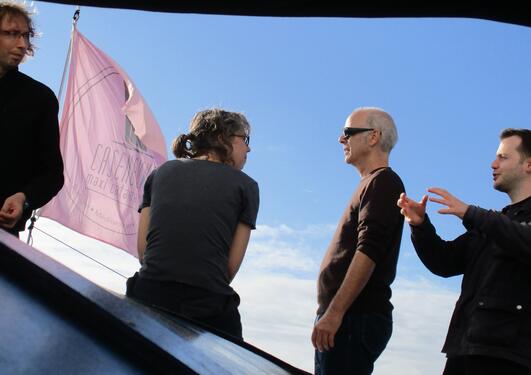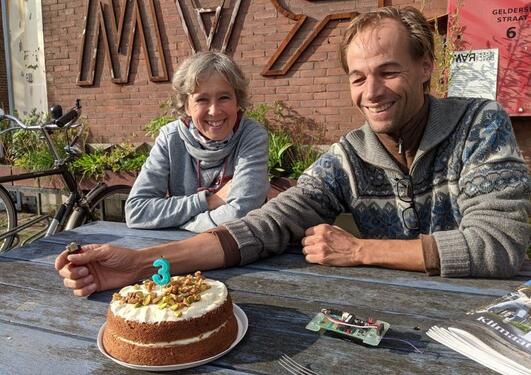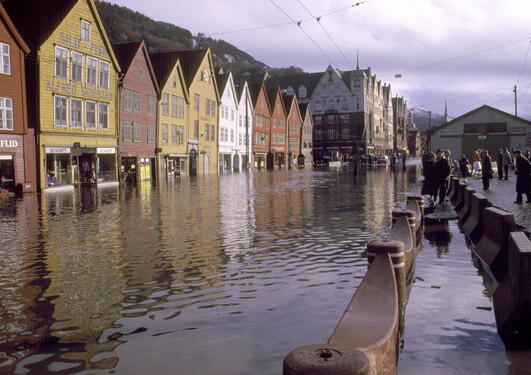Co-development of place-based Climate Services for action (Co-Cli-Serv)
Co-Cli-Serv explores novel ways to transform climate science into action-oriented place-based climate services to engage, enable and empower local communities, knowledge brokers and scientists to act locally.

Main content
About the project
Co-Cli-Serv (Co-development of place-based Climate Services for action) seeks to identify future information needs and the nature of the climate science needed to address the local communities’ concerns, aspirations and goals in view of climate variability and climate change. It has developed a novel approach for co-constructing climate services to support local planning and adaptation decision-making. Co-Cli-Serv has established a collaborative relationship between climate science and local communities in five representative case studies across NW Europe; (i) Bergen in Norway; (ii) Brest and the Golfe du Morbihan in France, Dordrecht and surrounding area in the Netherlands, and communities along the Wadden Sea in Germany.
The project engages a wide spectrum of actors from local government, to the tourism industry, to local NGOs and to professional associations. It aims to proactively connect climate science with local communities, using local narratives as an entry point, and vision planning and adaptive pathways as co-construction locus. Central in Co-Cli-Serv's approach is its focus on narratives of change as a localisation device. Narratives give meaning to facts and scientific calculations. They turn ‘matters of fact’ into ‘matters of concern’. Grounded in such narratives, vision-based scenarios have been developed by employing an incremental and community-led strategy, enabling the identification of current AND future knowledge needs.
Case studies
Bergen, Bryggen, the old wharf of Bergen, is a reminder of the town’s importance as part of the Hanseatic League’s trading empire from the 14th to the mid-16th centuries. The Hanseatic eague established a total of four overseas Hanseatic Offices, Bryggen being the only one reserved today. Bergen has a long tradition in surface water management. The city has managed tis rather well so far, but existing water systems are about to reach their limit of capacity, andmany will have problems in the future, due to climate change.
Dordrecht, the Isle of Dordrecht (99 km2), in the west of the Netherlands, is enclosed by rivers and is at a fluvial crossroads, with river channels connecting it to Rotterdam and to the outhwest Delta. It contains the city of Dordrecht (119,000 inhabitants) and surrounding aricultural and nature areas. Most areas are about 1.5 m below sea level and are protected by dikes. The Isle also contains unembanked areas, such as the historic harbour, which floods occasionally.
German Wadden Sea coastline: Climate change is considered as a threat to Northern Germany’s coastline and to the National Park and UNESCO world heritage site of the Wadden Sea. The ecosystem of the Wadden Sea is already undergoing change. Coastal protection, dike maintenance and coastal zone management, beach nourishment and other strategies provide potential for dispute about the future of the Wadden Sea region. For the project, we will choose a case study from East or North Frisia.
Golfe du Morbihan, The Gulf of Morbihan (115 km2) is a natural harbour on the coast of the Département of Morbihan in the south of Brittany, France. Dotted with many islands and islets and covering 100 km2, it is a popular tourist destination, and it has been designated a ‘Regional natural park’. The Gulf of Morbihan is the setting for a multi-thousand-year history (dating back to the Palaeolithic) of continuous human occupation; thus since time immemorial, humans have influenced the territory. These natural and cultural riches make it a coveted space whose balance is fragile and threatened by different pressures, including climate change.
Saint-Pierre quarter in Brest, the Saint-Pierre quarter in Brest, is mostly structured around post-war housing projects. Following Brest’s extensive destruction in 1944-45, the former commune of Saint-Pierre-Quilbignon became the site of a major reconstruction combined with housing development to house those displaced by the war. Today it houses a highly multicultural community that is facing the two challenges to Brest: deindustrialisation and relative economic downturn. As such, it gives access to a very particular weatherscape, made of memories of a past in which local and global are intertwined, where its inhabitants’ nostalgia for various pasts is hampering the ability to foresee the future.









